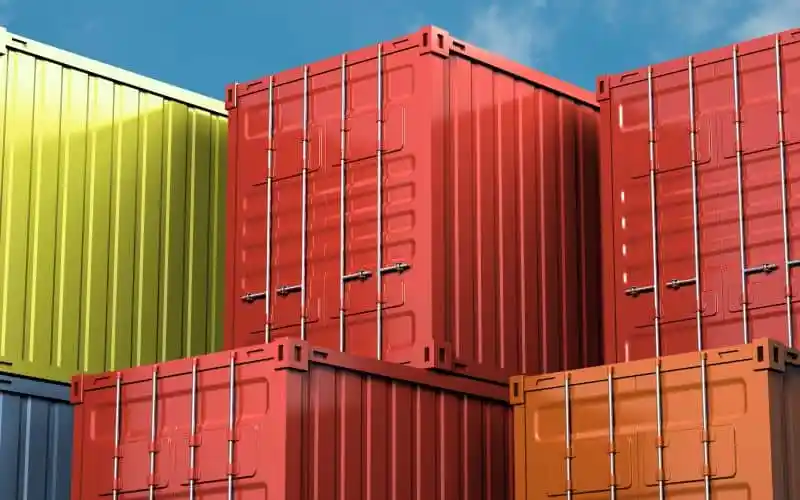Shipping containers are becoming increasingly popular, not only in logistics but also in construction, storage and even as a framework for tiny homes and offices. Their durability, adaptability and relative affordability make them a sought-after resource for a wide variety of uses.
However, buying a shipping container can be a significant investment and with numerous options available, it’s essential to know what to look for to ensure quality, value and suitability for your needs.
This guide will walk you through the key factors to consider where to find quality shipping containers and what to expect when purchasing one.
1. Understand the Different Types of Shipping Containers
Shipping containers come in various sizes, shapes and configurations. Knowing what type best suits your purpose is the first step in making an informed purchase.
- Standard Dry Containers: These are the most common type, typically used for storage and transportation. They’re fully enclosed, have a sturdy steel construction and come in 20-foot and 40-foot lengths.
- High Cube Containers: These are similar to standard containers but offer extra height (about one foot higher). High cube containers are ideal for those needing additional vertical space, such as when using the container for storage of taller items or creating a home.
- Refrigerated Containers (Reefers): These containers are insulated and equipped with cooling systems, making them suitable for perishable goods. They’re more expensive than standard containers due to the refrigeration equipment and are ideal for temperature-sensitive storage.
- Open-Top and Flat Rack Containers: Open-top containers lack a roof, allowing items to be loaded from the top. Flat rack containers are open on all sides and are best for heavy machinery and awkwardly-shaped items.
- Double-Door Containers: Also known as “tunnel containers,” these containers open on both ends, making loading and unloading easier. They’re perfect for sites where flexibility in access is essential.
2. Assess Your Needs
Before buying a container, consider what you’ll be using it for and where it will be placed. Some factors to consider include:
- Size Requirements: Are you using it for storage, conversion, or transportation? A 20-foot container may suffice for most storage needs, but a larger 40-foot container may be necessary for bigger projects.
- Condition Preferences: Containers come in various conditions, from “new” to “as-is.” New or “one-trip” containers are usually in top shape but more expensive. Used containers are more affordable and, depending on the grade, can still be of high quality for most applications.
- Climate Considerations: For sensitive items, you may need an insulated or refrigerated container. If your location experiences extreme weather, a container with added weatherproofing could be beneficial.
3. Know the Container Conditions and Grades
Shipping containers are graded based on their condition and suitability for transport. Here’s a quick guide to the main condition grades:
- One-Trip or New Containers: These are practically brand new, having only been used for a single shipment. They are in the best condition, with little to no wear or rust.
- Cargo-Worthy (CW) Containers: These are structurally sound and certified for shipping but may have cosmetic wear, rust, or dents. They’re perfect for storage or conversion projects.
- Wind and Watertight (WWT) Containers: While not certified for shipping, WWT containers are still sealed and secure. They’re great for on-site storage or projects where appearance isn’t a primary concern.
- As-Is Containers: These are sold in their existing condition, which may include damage, significant rust, or missing parts. As-is containers are generally the most affordable but often require repairs.
4. Inspect the Container
Inspecting a container in person is ideal, but if that’s not possible, request detailed photos or a video walk-through. Here are some essential areas to focus on:
- Exterior Walls and Roof: Look for signs of dents, rust, or holes, particularly on the roof and walls. Minor cosmetic rust is generally acceptable, but severe corrosion may indicate structural weaknesses.
- Doors and Seals: Ensure the doors are easy to open and close and that the seals are intact. Damaged or missing seals can allow moisture and pests to enter the container.
- Floor Condition: Most shipping container floors are made of marine-grade plywood. Check for signs of rot, soft spots, or cracks. Also, inspect the floor for any chemical spills if the container was previously used to transport hazardous materials.
- Corner Castings: The corner castings are crucial for securing the container and ensuring it can be safely stacked. Look for any damage that might compromise the container’s stability.
5. Understand Pricing and Budget Considerations
Container prices vary based on condition, size and location. Here’s a rough breakdown to help you plan your budget:
- New Containers: Typically range from $3,000 to $5,000 for a 20-foot container and $5,000 to $7,000 for a 40-foot container.
- Used Containers: Depending on the grade, a used 20-foot container may cost between $1,500 and $3,000, while a 40-foot container can range from $2,500 to $4,500.
- Refrigerated and Specialty Containers: These tend to be more expensive, with reefers often starting at $5,000.
6. Where to Buy Quality Shipping Containers
Here are some common sources for buying containers:
- Direct from Shipping Companies: Many shipping companies sell their retired containers directly. This option allows you to avoid dealer markups and potentially get a better deal.
- Container Retailers: Specialized container retailers offer a range of options, often including refurbished and certified containers. Many also provide additional services like modifications or delivery.
- Online Marketplaces: Websites like eBay, Craigslist and specialized container sites can offer deals on used containers. However; exercise caution, as buying sight unseen from private sellers carries some risk.
- Local Container Yards: Some areas have container depots where you can view and purchase containers in person. This option allows for in-person inspections and sometimes better prices.
7. Consider Transportation and Delivery Logistics
Shipping containers are heavy and large, making transportation a key consideration. Before buying, confirm if the seller offers delivery services and inquire about the cost. You may need a crane or forklift to offload the container at your site, especially if it’s a 40-foot container. Also, ensure there’s enough space for the delivery vehicle to maneuver and place the container.
8. Additional Customization and Modification Options
Many buyers modify their containers for specific needs. Customization can include adding doors, windows, insulation, ventilation, electrical wiring, or even climate control. Some sellers offer modification services, or you can hire a professional to tailor the container for your purposes. Customizing a container can add to the cost, so include these expenses in your budget if you plan to modify.
9. Permits and Zoning Requirements
Depending on your location and intended use, you may need a permit to place a shipping container on your property, especially if you plan to use it as a building structure or living space. Check with local authorities to understand the zoning regulations and permit requirements in your area. Failing to comply with local codes can result in fines or the need to remove the container.
10. How to Maintain Your Shipping Container
A well-maintained container can last several decades. Here are a few tips for prolonging its lifespan:
- Regular Inspections: Inspect the container periodically for signs of rust, dents, or damage and address any issues promptly.
- Keep It Elevated: Placing the container on a foundation or supports helps prevent moisture from seeping into the floor and avoids rust build-up on the underside.
- Address Rust Early: Minor rust can be treated with anti-corrosion paint. For larger issues, consider hiring a professional to repair it.
- Ensure Proper Ventilation: Containers can get very hot inside, so add ventilation if it will store temperature-sensitive goods.
Conclusion:
Buying a shipping container is a significant investment, but with the right approach, it can provide a versatile, long-lasting solution for a wide range of uses. Understanding the types of containers, assessing your needs, knowing where to buy and taking steps to inspect and maintain it will help ensure you get a quality container that meets your requirements. With these tips in mind, you’re now ready to find the perfect shipping container for your project.





